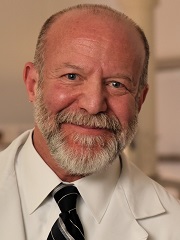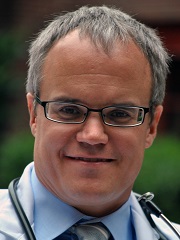Innovation in action: The genesis of the geriatric ED
- The geriatric emergency department (ED) concept was an innovative idea that started at a single hospital.
- The idea spread as other hospitals developed their own units, prompting the American College of Emergency Physicians to develop an accreditation program.
- Innovation in healthcare organizations requires a culture that encourages staff members to suggest improvements.
Mark Rosenberg, DO, chairman of emergency medicine at St. Joseph’s Health in Paterson, N.J., was tagging along with his wife, a geriatric researcher, in 2002 when he attended an international conference on population aging that made him start thinking about the so-called silver tsunami. In conversations with other attendees, he found himself brainstorming a new way of caring for elderly patients in the emergency department. “That’s where I thought up the idea of a geriatric emergency department, and a lot of people there — this was a worldwide audience — thought this was a great innovation,” he says.

Seven years later, St. Joseph’s University Medical Center opened the nation’s first geriatric ED, designed to provide a special level of care for frail elderly patients. Other hospitals followed St. Joseph’s lead; there are now an estimated 125 geriatric EDs around the country.
Recognizing the importance of the concept, the American College of Emergency Physicians developed a three-level accreditation program that launched in 2018. St. Joseph’s was among the first hospitals in the nation to receive Level 1 — the highest level — accreditation. Since then, 73 other hospitals have earned ACEP accreditation for their geriatric EDs.
Sidebar: Geriatric EDs improve care, reduce utilization
The goal, says Kevin Biese, MD, co-director of the Division of Geriatric Emergency Medicine at University of North Carolina-Chapel Hill and chair of ACEP’s accreditation program, is to change how frail elderly patients receive care. When such patients present at a general ED, they frequently end up admitted to the hospital because the ED physician believes they cannot be safely discharged home. What they really need, in many cases, is social support and medical care that allow them to live safely and manage their chronic conditions at home.
“Sometimes they end up on a on a repetitive cycle of admissions for chronic diseases, or often — too often — for social needs that are not being met,” Biese says. “We are working to help emergency departments provide safe and patient-centered care and then plug those individuals, when appropriate, into outpatient resources.”

Establishing an innovative concept
Innovation requires the ability to communicate an idea, a plan for implementation and persistence when naysayers emerge, Rosenberg says.
Without the proper support to stay at home, frail seniors with multiple chronic conditions can be prone to frequent ED visits, inpatient stays and readmissions. Rosenberg’s first success was convincing the hospital’s CEO that a geriatric ED could address this issue by focusing on transition-of-care plans so that patients could be discharged safely to their homes.
One protocol was key to the initiative’s early success, Rosenberg says. All patients treated in the geriatric ED received a phone call the following day, again on the third day after a visit and again on the seventh day to make sure they had the support they needed.
“We very quickly saw major changes,” he says. “Patients weren’t returning to the emergency department because their initial illness or injury did not have good follow-up. It worked better than we would have ever believed.”
Eventually, St. Joseph’s and two other health systems received grant funding from the Center for Medicare & Medicaid Innovation to develop and test geriatric ED interventions, including the use of transitional-care nurses to identify patients’ social and medical needs and coordinate their transition from ED to home. A study found that use of a transitional-care nurse reduced unnecessary hospital admissions by as much as 33%.
Still, implementation did not always go smoothly. At the outset, Rosenberg says, many nurses and physicians were not supportive. “They didn’t want to work in a bed-pan unit, and they felt working in a geriatric area was demeaning.”
Communication was needed to reframe their thinking. “When I explained that this could be their parents and their grandparents that we are taking care of, we got buy-in, and a core group of nurses and physicians wanted to work there,” he says. “A decade later, we have a long list of physicians and nurses who want to work in the geriatric emergency department, and it has evolved to become a full-service multidisciplinary department.”
Where innovation flourishes
The geriatric ED is one of many innovative ideas to emanate from St. Joseph’s emergency department under Rosenberg’s direction. Among others is the Alternatives to Opiates Program, an approach to providing acute pain management without opioids that has been adopted widely across the country and led to federal legislation. St. Joseph’s also was the first to establish an ED palliative care program to understand the goals and wishes of ED patients with life-limiting illness and manage their care accordingly.
Because of that track record, Rosenberg was named St. Joseph’s first chief innovation officer, assigned to develop a culture that encourages and supports innovation throughout the system. “There are people in all organizations who have good ideas, and those ideas are frequently the start of something that can be amazing,” he says.
Innovation is fostered when all members of an organization feel confident that their ideas are valued and know how to put forth an idea. Establishing such an environment requires an organized system — via the existing management structure or an independent committee or department responsible for innovation — to review ideas and provide the budget and infrastructure needed to implement worthwhile concepts.
“You have to come up with a way you can vet these ideas,” Rosenberg says. “But the main idea is changing the culture from ‘just follow your job description’ to one in which everybody has an opportunity to say how they think their job can be done better.”
Interviewed for this article: Kevin Biese, MD, co-director, Division of Geriatric Emergency Medicine, University of North Carolina-Chapel Hill, Chapel Hill, N.C.; Mark Rosenberg, DO, chairman of emergency medicine and chief innovation officer, St. Joseph’s Healthcare System, Paterson, N.J.





